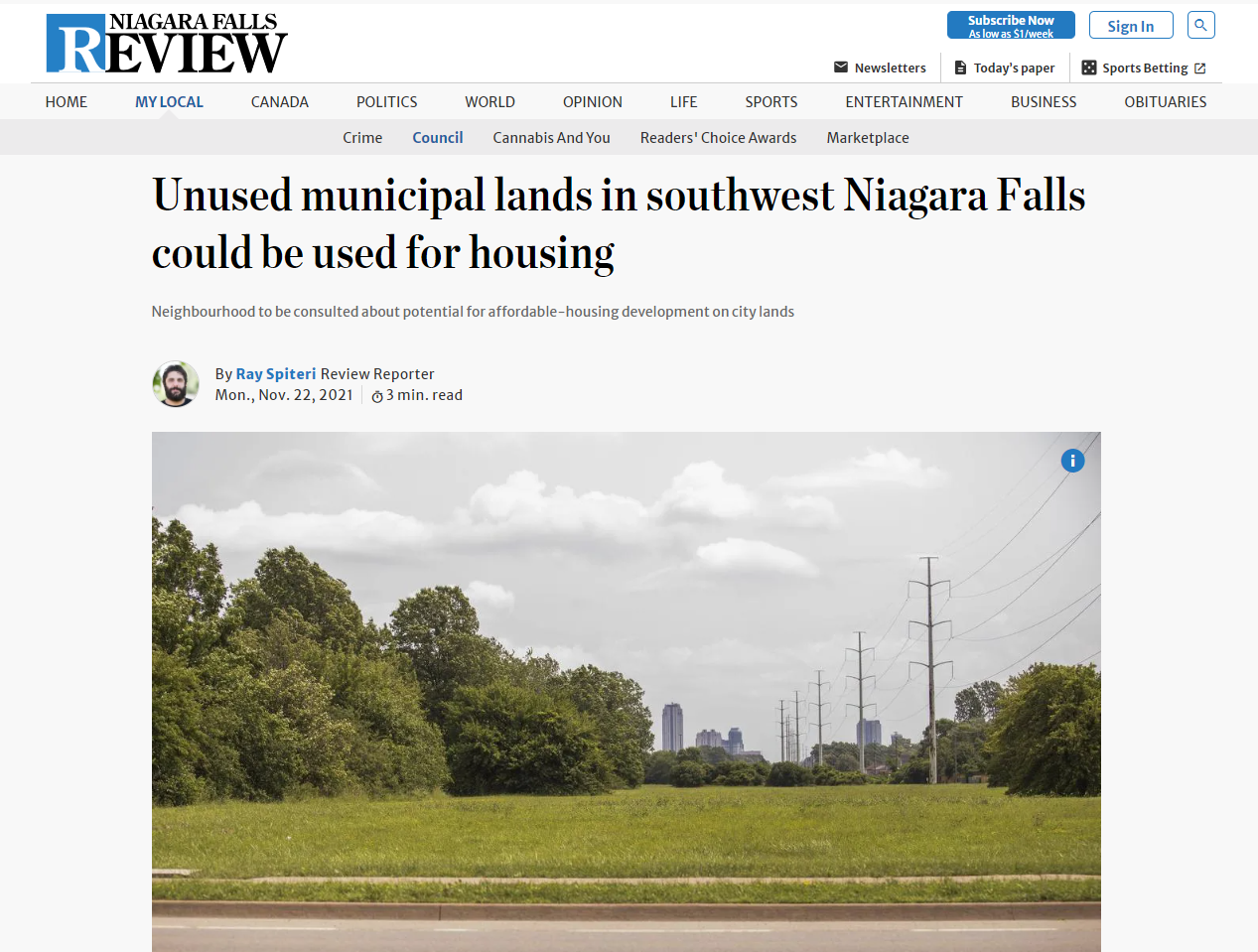Niagara Falls city staff will begin consultations on potentially using unused municipal lands for affordable housing.
In June, city council established an affordable housing ad hoc committee to examine Dunn Street extension lands in the southwest end of the city.
In July, council directed staff to have concept drawings prepared.
Raimondo and Associates was contracted to prepare designs, which were submitted for council’s consideration during its meeting last week.
Staff will set up a neighbourhood meeting with residents, and schedule a public meeting for zoning.
There are two subject parcels of land — between Kalar and Pitton roads, and off Charnwood Avenue.
The design concept for the west half, fronting Kalar Road, shows potential for a three-storey, 40-unit apartment building with 56 parking spaces. Lands to the north are used for a three-storey apartment building and to the south is a hydro transmission corridor.
Two design concepts were submitted for the east half fronting Pitton Road, illustrating opportunity for 21 two-storey townhouse units or 28 stacked townhouse units. The lands abut the hydro corridor to the south.
Two design concepts were submitted fronting the east side of Charnwood Avenue, with potential for 18 two-storey townhouse units or 16 stacked townhouse units.
Staff said investigation is needed to address geotechnical aspects associated with development, site-servicing requirements and preparation of a tree preservation/removal plan.
It’s to be determined whether development could be a private/public partnership or whether lands would be sold directly to not-for-profit housing providers or private builders with affordability requirements, said staff.
“I’m quite happy with the fact that it looks like in this particular piece of property, even though part of it is going to end up not being developable right now because we have some underground services in there, we’re going to be able to fit almost 100 units,” said Coun. Victor Pietrangelo, who originally brought the lands to council for consideration as affordable housing.
“Council will have options once the land is rezoned. I think the next step in the process is to go forward with the rezoning, move it to a public meeting, and go forward from there.”
Coun. Wayne Thomson said it’s important to receive public input on what could be a controversial proposal.
“This is a path for the hydro and there’s huge trees all the way along,” he said, adding he’s interested to hear the opinion of nearby residents.
Coun. Carolynn Ioannoni said she walks that area “three times a day.”
“The amount of trees you’re going to have to take down there is going to be repulsive, and good luck trying to get the co-operation of the neighbours in the area,” she said.
“They love their green space. It’s not just used by the adjacent communities, it’s used by the community all around.”
Alex Herlovitch, director of planning, building and development, said staff will listen to concerns of residents and make any necessary modifications to the drawings.
He said an arbourist report will identify what trees can be preserved.
Pietrangelo made note of a report indicating Niagara needs 7,500 affordable-housing units.
He said while trees are important, “at some point we have to decide where our priorities are going to be.”
“Are we going to get serious about building units or are we going to let things stand in the way?”
Ray Spiteri is a St. Catharines-based reporter for the Niagara Falls Review. Reach him via email: raymond.spiteri@niagaradailies.com




